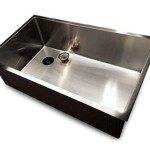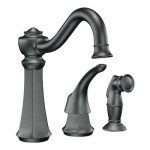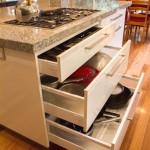Kitchen Remodeling in Silver Spring, MD: A Comprehensive Guide
Kitchen remodeling represents a significant investment for homeowners in Silver Spring, MD. It's a project that can dramatically enhance a home's functionality, aesthetic appeal, and overall value. However, a successful kitchen remodel requires careful planning, a realistic budget, and a clear understanding of the available options. This article provides a comprehensive overview of kitchen remodeling in Silver Spring, covering key considerations and essential steps for a successful project.
The decision to remodel a kitchen often stems from a variety of needs and desires. Outdated appliances, inefficient layouts, insufficient storage, or simply a desire for a more modern and aesthetically pleasing space are common motivators. Regardless of the underlying reason, it’s crucial to approach the project with a well-defined plan and a realistic understanding of the process involved.
Before embarking on any actual work, homeowners should carefully assess their current kitchen. This involves taking accurate measurements, noting any existing structural limitations, and identifying pain points that the remodel aims to address. This initial assessment forms the foundation for the entire project and helps prevent unforeseen complications later on.
Defining Your Kitchen Remodeling Goals
The first and perhaps most critical step is defining the specific goals of the kitchen remodel. This involves determining the desired functionality, aesthetic style, and overall scope of the project. Asking important questions will aid in this process:
Are you looking to simply update existing features or completely redesign the space? Do you need more storage, counter space, or improved workflow? What is your preferred style – modern, traditional, contemporary, or something else entirely? Answering these questions will help in creating a clear vision for the remodeled kitchen.
Budget is a crucial factor that significantly impacts the achievable goals. Establishing a realistic budget early on is essential for making informed decisions about materials, appliances, and design choices. It's also important to allocate a contingency fund to cover unexpected costs that may arise during the project.
Once you have a clear understanding of your goals and budget, you can begin exploring different design options. This may involve consulting with a kitchen designer or architect who can offer expert advice and create detailed plans that align with your vision and budget. A professional designer can also provide valuable insights into space planning, material selection, and building codes.
The design phase is crucial for ensuring that the remodeled kitchen meets both functional and aesthetic requirements. This includes determining the layout of cabinets, appliances, and countertops, as well as selecting appropriate materials, finishes, and lighting fixtures. Careful consideration should be given to ergonomics, workflow, and storage solutions to create a kitchen that is both beautiful and efficient.
During the design process, it's important to consider how the kitchen will integrate with the rest of the house. The style and finishes should complement the overall aesthetic of the home. In open-concept homes, the kitchen must seamlessly blend with the adjacent living and dining areas. This requires careful attention to color palettes, materials, and design details.
Selecting Materials and Appliances
Choosing the right materials and appliances is a crucial aspect of kitchen remodeling. The selected materials should be durable, aesthetically pleasing, and compatible with the overall design style. Similarly, appliances should be energy-efficient, reliable, and chosen based on cooking habits and lifestyle. This can include cabinets, countertops, flooring, backsplashes, lighting, and hardware.
Cabinets are a major component of any kitchen remodel and can significantly impact the overall look and functionality of the space. Options range from stock cabinets to semi-custom and custom cabinets. Stock cabinets are typically the most affordable option, while custom cabinets offer the most flexibility in terms of design and customization. The choice depends on budget, design preferences, and space constraints.
Countertops are another important element to consider. Popular countertop materials include granite, quartz, marble, and laminate. Each material has its own unique characteristics in terms of durability, aesthetics, and cost. Granite and quartz are known for their durability and heat resistance, while marble offers a luxurious and elegant look. Laminate is a more affordable option that comes in a wide variety of colors and patterns.
Flooring options for kitchens include tile, hardwood, laminate, and vinyl. Tile is a popular choice due to its durability and water resistance. Hardwood offers a warm and inviting look but requires more maintenance. Laminate and vinyl are more affordable and easier to clean. The choice of flooring material depends on budget, lifestyle, and design preferences.
Backsplashes serve both functional and aesthetic purposes. They protect the walls from splashes and spills while adding visual interest to the kitchen. Common backsplash materials include tile, glass, and stone. The backsplash can be a focal point of the kitchen or a subtle complement to the other design elements.
Lighting is crucial for creating a well-lit and functional kitchen. A combination of ambient, task, and accent lighting is recommended. Ambient lighting provides overall illumination, while task lighting focuses on specific work areas. Accent lighting highlights architectural features or decorative elements. LED lighting is a popular choice due to its energy efficiency and long lifespan.
Selecting the right appliances is also essential for a successful kitchen remodel. Energy-efficient appliances can save money on utility bills and reduce environmental impact. Consider factors such as size, features, and brand reputation when choosing appliances. It's also important to ensure that the appliances are compatible with the overall design of the kitchen.
The Remodeling Process and Hiring Professionals
The actual remodeling process involves a series of sequential steps, starting with demolition and extending to finishing touches. While some homeowners opt for a DIY approach, most kitchen remodels are best handled by experienced professionals. Hiring a qualified contractor is crucial for ensuring that the project is completed on time, within budget, and to the highest standards.
The first step is demolition, which involves removing the existing cabinets, appliances, and flooring. This process can be messy and disruptive, so it's important to take precautions to protect the rest of the house. Dust barriers and floor coverings can help minimize the mess.
Once the demolition is complete, the next step is to address any necessary structural repairs or modifications. This may involve reinforcing walls, moving plumbing lines, or updating electrical wiring. It's important to obtain the necessary permits and inspections to ensure that the work is done according to code.
After the structural work is complete, the next step is to install the new cabinets, countertops, and flooring. This requires precision and attention to detail to ensure that everything is level, plumb, and properly aligned. It's also important to follow the manufacturer's instructions for installation.
Once the cabinets, countertops, and flooring are installed, the next step is to install the appliances and plumbing fixtures. This includes connecting the water lines, gas lines, and electrical wiring. It's important to hire qualified professionals to handle these tasks to ensure safety and compliance with building codes.
The final step is to add the finishing touches, such as painting, installing the backsplash, and adding hardware. This is where the kitchen really comes to life. Attention to detail is crucial for achieving a polished and professional look.
Finding a reputable and qualified contractor is paramount for a successful kitchen remodel. Several factors must be considered during the selection process. Check licenses and insurance to ensure that the contractor is properly qualified to perform the work. Read online reviews and ask for references from previous clients. It’s also important to obtain multiple bids and compare them carefully.
A detailed contract that clearly outlines the scope of work, payment schedule, and project timeline is a must. This contract should also include provisions for change orders and dispute resolution. Review the contract carefully before signing to ensure that all terms and conditions are acceptable.
Regular communication with the contractor throughout the project is essential. Stay informed about the progress of the work and address any concerns or questions promptly. Regular site visits can help ensure that the work is proceeding according to plan and that any issues are resolved quickly.
Kitchen remodeling in Silver Spring, MD, is a multifaceted process that requires careful planning and execution. By defining clear goals, establishing a realistic budget, selecting appropriate materials and appliances, and hiring qualified professionals, homeowners can transform their kitchens into functional and aesthetically pleasing spaces that enhance their homes' value and enjoyment for years to come.

Custom Kitchen Design In Silver Spring Contact Us Today

Custom Kitchen Remodeling In Silver Spring Md

Custom Kitchen Remodeling In Silver Spring Md

Custom Kitchen Remodeling In Silver Spring Md

Custom Kitchen Design In Silver Spring Contact Us Today

Custom Kitchen Remodeling In Silver Spring Md

Kitchen Bath Remodelers In Silver Spring Md Call Today

Custom Kitchen Remodeling In Silver Spring Md

How Much Does Kitchen Remodeling Cost In Silver Spring Md

Kitchen Remodel In Silver Spring Md Transitional Dc Metro By Case Architects Remodelers Houzz Ie








